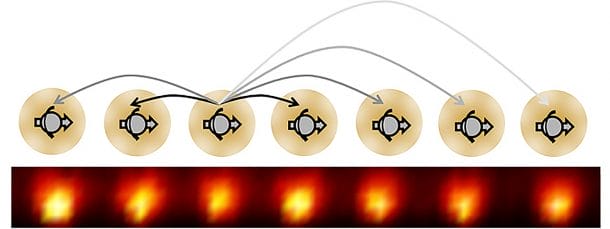There is no limit to what science can achieve, as proved by two groups of scientists who claim to have created a new type of matter called time crystals. The material is based on a blueprint from the University of California, Berkeley and has been created by an assistant professor of physics Norman Yao. The novelty in these findings is that unlike any other material whose crystal structure repeats just in space, the time crystals’ structure repeats in the time domain!
Regular crystals, like diamonds, consist of an arrangement of atoms which repeats in space to form an atomic lattice. But time crystals’ structure is nothing like that, as it continues through time in perpetual movement, meaning they oscillate without needing any external energy.
Yao said,
“Wouldn’t it be super weird if you jiggled the Jell-O and found that somehow it responded at a different period? But that is the essence of the time crystal.”

The creation of time crystals is a giant step in our understanding of materials, but according to Yao, that’s not the only exciting aspect of this discovery. In a statement, he mentioned,
“This is a new phase of matter, period, but it is also really cool because it is one of the first examples of non-equilibrium matter. For the last half-century, we have been exploring equilibrium matter, like metals and insulators. We are just now starting to explore a whole new landscape of non-equilibrium matter.”
In contrast, other crystal materials such as rubies or diamonds are in motionless equilibrium, but a non-equilibrium matter like time crystals are constantly in motion.
Groups at Harvard University and the University of Maryland also replicated Yao’s blueprint and successfully created time crystals, verifying the validity of the crystal’s existence. The researchers claim to have used “two totally different setups,” according to the UC Berkeley statement, and their research findings have been submitted for publication, with Yao credited as a co-author on both.
We would appreciate your feedback in the comments’ section below.


